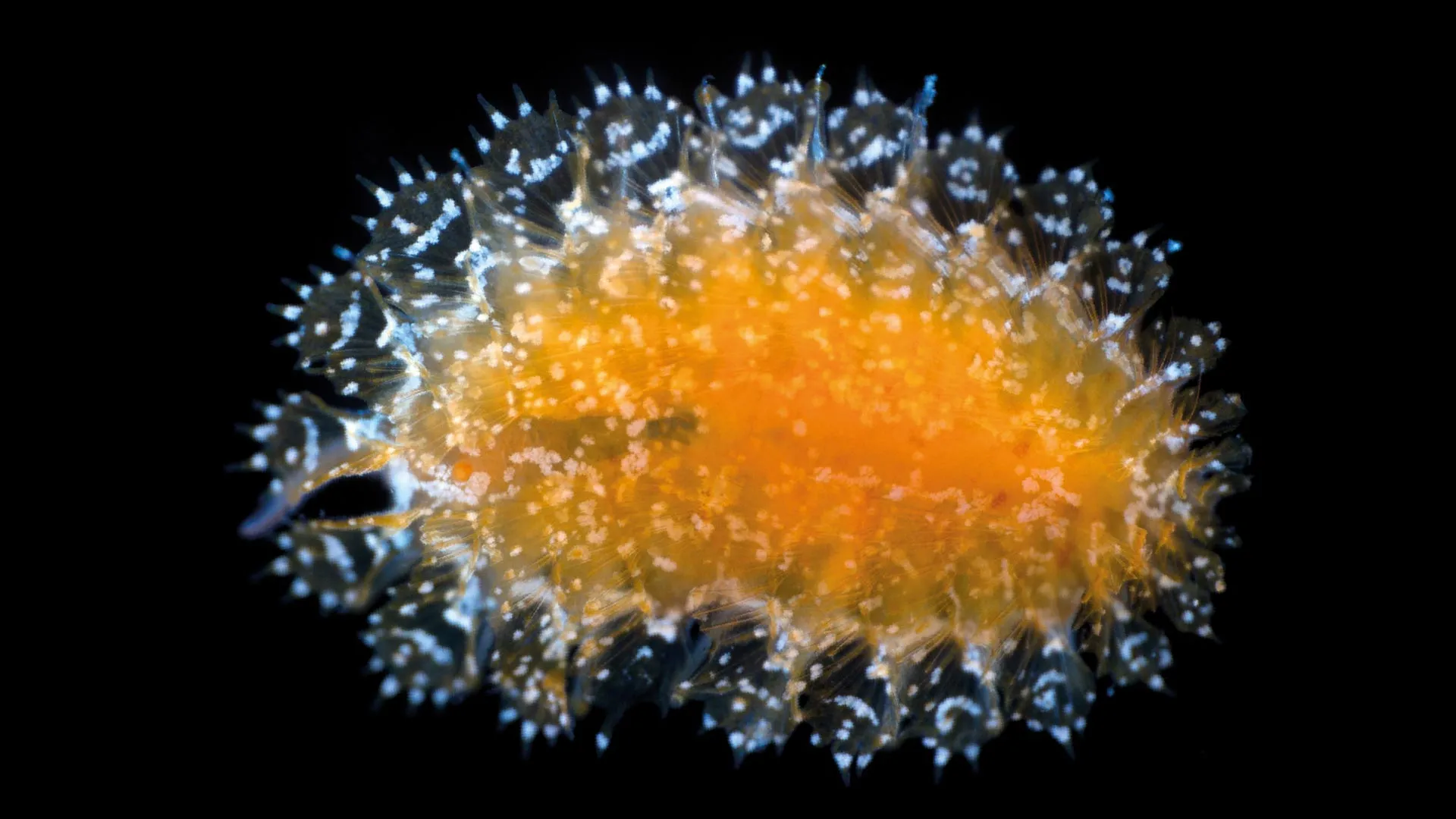Scientists discover 14 strange new species hidden in the deep sea
- Date:
- November 2, 2025
- Source:
- Pensoft Publishers
- Summary:
- Scientists are revolutionizing how new marine species are described through the Ocean Species Discoveries initiative. Using advanced lab techniques, researchers recently unveiled 14 new species from ocean depths exceeding 6,000 meters. Their findings include a record-setting mollusk, a carnivorous bivalve, and a popcorn-like parasitic isopod. The project aims to make taxonomy faster, more accessible, and globally collaborative.
- Share:

Earth's oceans hold extraordinary biodiversity, yet only a small portion of an estimated two million marine species have been formally identified and described. One of the biggest hurdles in ocean science is the lengthy delay -- sometimes lasting decades -- between when a species is first discovered and when it is officially documented.
To overcome this bottleneck, researchers launched Ocean Species Discoveries, a data-rich publication platform designed for concise, high-quality marine invertebrate species descriptions. By providing a faster, more standardized system, it dramatically shortens the time needed to publish new species. This speed is essential, as many marine species face extinction due to human-driven biodiversity loss before scientists even learn they exist.
The project is coordinated by the Senckenberg Ocean Species Alliance (SOSA), part of the Senckenberg Research Institute and Natural History Museum Frankfurt. SOSA's mission is to foster global cooperation, supply technical resources for species documentation, and promote efficient, transparent taxonomic publishing.
14 New Species Described in the Latest Research Collection
In the second major Ocean Species Discoveries collection, more than 20 researchers collaborated to describe 14 new marine invertebrate species and two new genera from across the globe. These included a variety of worms, mollusks, and crustaceans. The findings were published in Biodiversity Data Journal, marking a milestone one year after the project's pilot paper.
"Our shared vision is making taxonomy faster, more efficient, more accessible and more visible," the team said in their paper.
Many of the new discoveries were made possible through the Discovery Laboratory at the Senckenberg Research Institute and Natural History Museum Frankfurt. The lab provides access to cutting-edge techniques such as light and electron microscopy, confocal imaging, molecular barcoding, and micro-CT scanning. These tools enable researchers to collect detailed, high-quality data for precise species descriptions.
The study's subjects were collected from ocean depths ranging from just 1 meter to more than 6,000 meters. Among them is Veleropilina gretchenae, a newly identified mollusk recovered from the Aleutian Trench at 6,465 meters. It is one of the first members of the class Monoplacophora to have a high-quality genome published directly from its holotype specimen.
Record-Breaking Discovery: The Carnivorous Bivalve Myonera aleutiana
A major highlight of the project is the detailed anatomical study of Myonera aleutiana, a carnivorous bivalve. This marks only the second bivalve species ever documented entirely through non-invasive micro-CT scanning. The process produced more than 2,000 tomographic images, revealing remarkable detail of the animal's soft tissue and internal structure. It is also the first in-depth anatomical description for any Myonera species and sets a new depth record -- found between 5,170 and 5,280 meters, about 800 meters deeper than any previously known specimen.
Honoring a Scientific Legacy
One of the newly described species, Apotectonia senckenbergae, was named in honor of Johanna Rebecca Senckenberg (1716-1743), a naturalist and benefactor whose support for science and medicine helped inspire the formation of the Senckenberg Society for Nature Research. The amphipod was discovered at a depth of 2,602 meters in a mussel bed within the Galápagos Rift hydrothermal vent fields.
Ocean Oddities: Popcorn Parasites and Deep-Sea Hitchhikers
Some of the newly identified animals display peculiar traits. The parasitic isopod Zeaione everta has raised structures on the female's back that resemble popped corn kernels. Its genus name, derived from Zea (the corn genus), highlights this unusual appearance. Found in the Australian intertidal zone, the isopod also represents a completely new genus.
Researchers also observed fascinating interactions among known deep-sea creatures. The tusk shell Laevidentalium wiesei, collected from depths exceeding 5,000 meters, was discovered with a sea anemone attached to its anterior (concave) side -- a relationship never before documented within this genus.
Mapping Life in the Deepest Oceans
These discoveries showcase how global collaboration and advanced imaging are transforming marine taxonomy. By accelerating how species are documented and named, scientists can better understand -- and potentially protect -- the countless forms of life still hidden in Earth's vast and mysterious oceans.
Story Source:
Materials provided by Pensoft Publishers. Note: Content may be edited for style and length.
Journal Reference:
- Senckenberg Ocean Species Alliance (SOSA), Luiz F. Andrade, Christopher Boyko, Angelika Brandt, Barbara Buge, Yasmín Dávila Jiménez, Mats Henseler, Pablo Hernández Alcántara, Piotr Jóźwiak, Henry Knauber, Fabrizio Marcondes Machado, Carlos A. Martínez-Muñoz, Farzaneh Momtazi, Yumi Nakadera, Jian-Wen Qiu, Torben Riehl, Greg Rouse, Julia Sigwart, Boris Sirenko, Jesser Souza-Filho, Jan Steger, Anna Stępień, Ekin Tilic, Bianca Trautwein, Katarzyna Vončina, Jason D. Williams, Junlong Zhang. Ocean Species Discoveries 13–27 — Taxonomic contributions to the diversity of Polychaeta, Mollusca and Crustacea. Biodiversity Data Journal, 2025; 13 DOI: 10.3897/BDJ.13.e160349
Cite This Page: